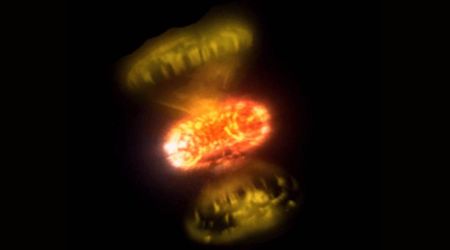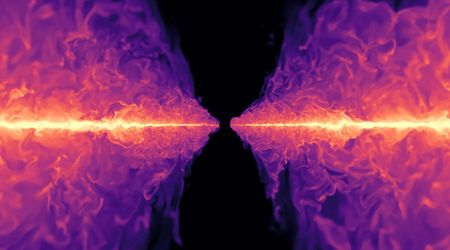NASA data helps scientists discover possible source of gold in space

For decades, scientists have made long-term efforts to solve the mystery of how elements heavier than iron, including gold and platinum, were first created and scattered through the universe. But new data from NASA has now given us significant insights into the cosmos origins of gold that we never knew, as revealed by CNN.

New research based on the signal detected and analysed by NASA points towards a clue: "Magnetars" or highly magnetized neutron stars. Scientists believe that lighter elements like helium, hydrogen, and even lithium existed soon after the Big Bang created the universe 13.8 billion years ago. And when massive stars exploded, the heat and pressure formed heavier elements like iron. In its scattered form, iron got mixed into interstellar gas clouds, which form planets and stars. Astrophysicists, however, have questioned how there has been a widespread distribution of gold despite it being heavier than iron throughout the universe. 
Astrophysicist Eric Burns, an assistant professor and astrophysicist at Louisiana State University in Baton Rouge, stated, "It's answering one of the questions of the century and solving a mystery using archival data that had been nearly forgotten," as per Science Alert. On the other hand, Anirudh Patel, lead author of the study published Tuesday in The Astrophysical Journal Letters and a doctoral student of physics at Columbia University in New York City, in a statement, said, “It’s a fun puzzle that hasn’t actually been solved,” according to CNN.
Back in 2017, a collision between two neutron stars was observed by astronomers, and gravitational waves were created by this cataclysmic clash. This collision event, known as a "Kilonova," created heavy elements like gold, platinum, and lead. According to study co-author Eric Burns, it is thought that the majority of the neutron star mergers happened in the last few billion years. However, Burns explained that data collected two decades ago from NASA and European Space Agency telescopes previously thought to be unsolvable indicate that energetic outbursts from magnetars formed in the universe's early years might have contributed to gold's creation.

Intrigued by the potential link between magnetars and heavy element formation, the research team initially looked for evidence in visible and even ultraviolet light. Nonetheless, Burns also looked into whether these flares produced detectable gamma rays. During the analysis, he examined the gamma-ray data from a large magnetar flare in December 2004, recorded by the now-defunct INTErnational Gamma-Ray Astrophysics Laboratory (INTEGRAL) mission, as reported by CNN. Though astronomers had recognized the signal, its relevance remained cryptic.

Interestingly, the team’s 2004 data matched almost flawlessly with Metzger’s model: a gamma-ray signature produced from the development and subsequent expulsion of heavy elements would look like a magnetar flare. Data collected from NASA's decommissioned Reuven Ramaty High Energy Solar Spectroscopic Imager (RHESSI) and Wind satellite also corroborated the team's findings. Burns remarked that this substantial contribution came from decades of sustained federally funded research.

Patel recalled the group’s thrill, mentioning that they did not know the corresponding signal was present in the 2004 datasets when building their model in December 2024. He said, “It's very cool to think about how some of the stuff in my phone or my laptop was forged in this extreme explosion (over) the course of our galaxy’s history.” In addition to that, Patel shared some light on NASA's Compton Spectrometer and Imager mission, or COSI, set to launch in 2027, which might build on the study's results. This wide-field gamma-ray telescope aims to watch giant magnetar flares and spot elements they create. The telescope could assist astronomers in looking for other possible sources of heavy elements throughout the universe, as per CNN.









